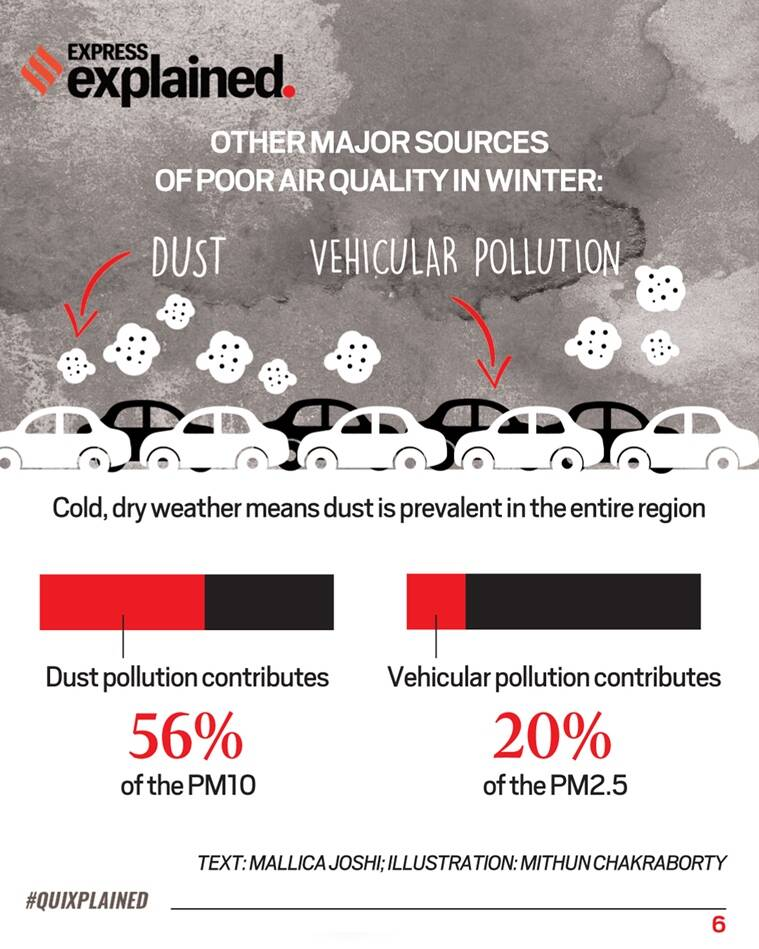Why Delhi air pollution rises in Oct
Why in the news?
- Every year in October the weather of Delhi starts to deteriorate. This starts a blame game between the centre and state government of Delhi.
- Let us analyse what conditions make Delhi vulnerable to pollution.
What are the factors?
- Air pollution of the delhi is a complex phenomenon which is determined by 3 major factors:
- The weather
- Inputs of pollutants
- Local conditions
What happens in October?
- In October North India faces the withdrawal of the monsoons.
- Once monsoon withdraws, the predominant direction of winds changes to north westerly which used to be easterly during the monsoon.
- Any kind of storm or cyclone in the near northwest region of pakistan or middle east brings changes in the Delhi weather. For example in 2017, a storm that originated in Iraq, Saudi Arabia and Kuwait led to a drastic dip in Delhi’s air quality in a couple of days.
- Secondly, in October the temperature starts to dip. When the temperatures drop the inversion height — which is the layer beyond which pollutants cannot disperse into the upper layer of the atmosphere – is lowered. The concentration of pollutants in the air increases when this happens.
- In the winters even wind speed decreases compared to in summers. The low wind speeds minimise the dispersion of the pollutants.
- Hence pollutants remain in the air for a longer time. The concentration of pollutants increases if there are farm fires and dust storms.
What is the role of stubble burning or farm fires?
- In a study conducted by IIT Kharagpur it is found that stubble burning/farm fires contribute up to 17-26% of all the particulate matter in Delhi winters.
- Stubble burning has been the cheapest and quickest way to handle the straw left over after the harvest.
- Since 2009, the stubble burning has increased because of the changes in the law made by the Punjab and Haryana government which asks the farmers to sow early. This law was modified to conserve the groundwater.
- The paddy straw and stalks have high silica content and are not used to feed livestock. The easiest, but the least productive, way to get rid of it is to set it on fire.
What are other sources of the pollution?
- Dust and vehicular pollution are the two biggest causes of dipping air quality in Delhi in winters.

Steps taken so far
- The introduction of BS VI (cleaner) fuel,
- Push for electric vehicles,
- Odd-Even vehicle movement as an emergency measure,
- Construction of the Eastern and Western Peripheral Expressways.
- Happy seeder machine which helps mulch the residue.
Reference:
Subscribe
Login
0 Comments
